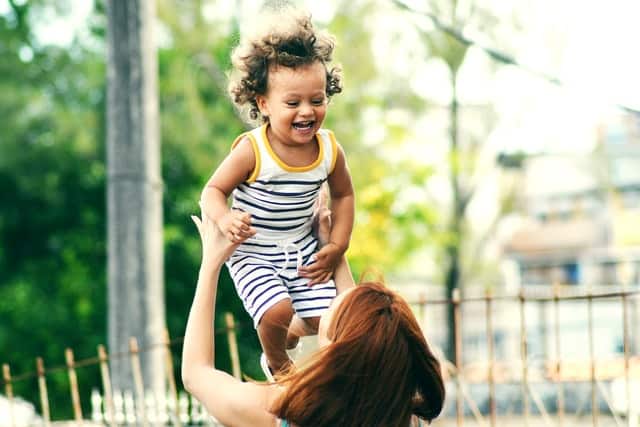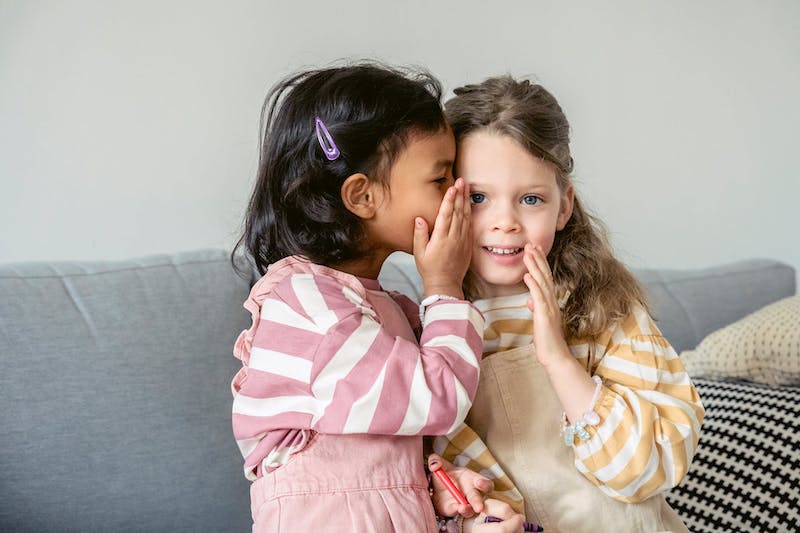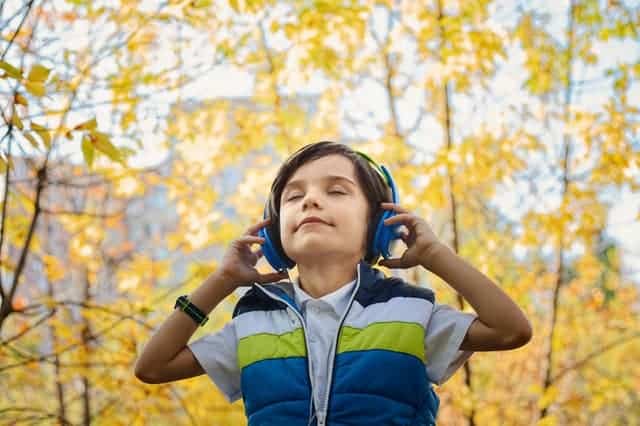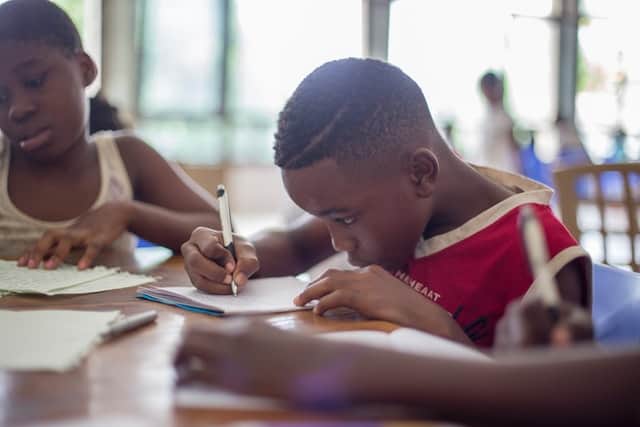Self-regulation is a vital skill for social, academic, and physical success. Read to learn self-regulation strategies and self-regulation activities to do at home or school.
What Is Self-Regulation?
Self-regulation is the ability to control one’s thoughts, behaviors, and emotions. This control is for the purpose of achieving long-term goals. It includes the ability to manage impulses and emotions without being overwhelmed. For example, self-regulation includes dealing with frustration or excitement in appropriate ways. Children are taught this skill in order to cope with strong emotions and to work towards a goal.
It is important that adults teach this skill. According to Duke University, “…supporting self-regulation development early in childhood is an investment in later success because stronger self-regulation predicts better performance in school, better relationships with others, and fewer behavioral difficulties.” Although this skill takes practice and patience while learning, the results are well worth it.
In this article, we will explore self-regulation milestones and list self-regulation strategies. Lastly, we’ll provide self-regulation activities that are easy to implement.
Self-Regulation Developmental Milestones

Learning self-regulation is an essential component of childhood development. Young babies communicate through crying to express feelings and thoughts. They are unable to regulate their emotions. When babies reach 12-18 months of age, they begin to become aware of social demands. As a result, they develop the ability to change their behavior with parental assistance. Parents can redirect their children and comfort them. This ability improves as children reach 2 years of age. Children start developing self-control even when parents aren’t around. In addition, they show an increased ability to follow behavioral norms. By 3 years of age, most children have some self-regulation strategies. Children are then able to build on past experiences, known as scaffolding, to improve their self-regulation (Child Development).
Self-Regulation Components
There are essential stepping stones in developing self-regulation. Children learn these building blocks over time:
- Thinking before acting
- Staying focused on a goal
- Remaining calm when they feel upset
- Paying attention and avoiding distractions
- Patience- learning to wait for what they want
- Cooperating with others
- Adapting to change
- Following social norms, even when they don’t like them
These self-regulation stepping stones help children develop into happy, healthy individuals, so they can succeed not only academically, but in life.
Self-Regulation Strategies

Teaching self-regulation strategies to children involves both the caregiver and the child. This is because the caregiver must model the strategies, as well as manage their own stress. When caregivers or teachers are overly stressed, it’s more difficult to demonstrate self-regulation skills.
Children will need adequate sleep and nutrition while learning these strategies. They’ll also need plenty of time for outdoor play. A warm, loving environment provided at home and at school will help children through the process.
Strategies include:
- Reading books about feelings or different experiences. They can be discussed and used as learning examples.
- Engaging in social learning lessons to improve social skills, communication, and vocabulary
- Implementing listening activities to improve focus and concentration
- Coaching self-regulation skills through modeling, instruction, skill enactment, and positive reinforcement (Duke).
Providing a structured environment with predictable routines will reinforce feelings of security and well-being. (Duke)
Self-Regulation Activities

Self-regulation activities will vary depending on the age of the child. Here is a list of activities, grouped by age.
Preschool-2nd Grade
- Red Light, Green Light (Penn State)
- Simon Says (Genius of Play)
- Duck Duck Goose (Kid Spot)
- Musical Chairs (Genius of Play)
- Mindfulness activities, such as breathing techniques, guided meditation
- Yoga poses and stretches (Reuters)
- Listening to calming music
- Helping children become self-reflective (Child Mind Institute)
- Role-playing scenarios of how to deal with emotions and situations
- Focus exercises, such as finding certain objects or colors and counting them (Positive Action).
- Play Emotion-based Charades (Nebraska Dept of Ed.)
- Teach self-love with mantras and positive sayings (Foothills Academy)
Keep everything grade appropriate and focus on giving positive reinforcement. For example, “I like how Jorge was sitting quietly and focusing on finding objects around the room!” This type of compliment is much more effective than saying, “Good job!” Giving detailed feedback helps children learn and motivates other children to try their best as well.
3rd-6th Grade
- Create a feeling toolbox with an empty shoebox and 3×5 cards. Take 2-3 minutes to discuss a new feeling every day. Then have students write that emotion on their 3×5 card and decorate it with a picture of that feeling. Students can look through the boxes at any time to discuss how they feel. It can also include comfort items, such as ribbons, stones, sensory items, stress balls, journals, and more. (Nebraska Dept of Ed.)
- Charades with triggers. Pick a feeling and then have the adult act out the situation that could trigger the feeling. Then have the child guess the situation. Afterward, reverse roles. (Nebraska Dept. of Ed.)
- Provide a “cool down” area where children can go to self-regulate when they are emotional and overwhelmed. This area can have coloring pages, books, pen and paper, and more (Edutopia).
- Check-in and check out. Check-in can be rolling or tossing a ball in a circle and taking turns. Students tell classmates something they did recently or share their own news. To check out, students tell others about what they liked or disliked about the day. (Nebraska Dept. of Ed.)
- Read stories to teach self-awareness. Bring attention to events in the book where characters are dysregulated, and discuss how they could self-regulate. Ask questions at the end of the book about how well the characters coped with difficult situations (Penn State).
- Journal with or without prompts (Penn State).
- Teach children about their brain and how it responds to stressful stimuli. In addition, teach how the brain can self-regulate. By showing children how the process works, they can better understand why it is important to develop these skills. Also, it shows them their ability to regulate themselves (Foothills Academy).
- Progressive Muscle Relaxation (Edutopia).
- Teach children positive internal dialogues and why it is important to use them. Have children develop their own mantras (Positive Action).
- Teach coping strategies to use at home or school. According to Foothills Academy, some strategies may include:
-
- Mental breaks (reading books, music, coloring)
- Physical breaks (yoga, dance, walking, stretching)
- Sensory experience (listening skills, touch with sensory toys)
- Spiritual break (yoga, mindfulness activities, positive mantras)
- Positive self-talk (affirmations)
- Social support (asking for help, peer groups, family or teacher connections)
- Grounding activities (deep breathing, slow counting, grounding exercise- 5 things they can see, 4 things they can hear, 3 things they can feel, 2 things they can smell, and 1 thing they can taste). (Pearson)
Teachers and caregivers should give positive reinforcement for self-regulating behaviors. Similarly, refraining from punishing children who are trying to learn these skills is important. Children will make mistakes. Just be sure to evaluate them appropriately and follow through on classroom rules. Lastly, be sure to model the behavior that you wish to see. Children often learn through seeing and then perform a similar behavior. Be consistent and children will learn quickly!

6th-12th Grade
- Have students journal each day. Students will choose a situation to write about. Instruct them to express the situation in detail. Additionally, they should write how the situation made them feel and how they coped with that feeling. If the situation was positive, have them think about how that success made them feel. This helps with the reflective process (Positive Action).
- Daily or weekly check-in. Have students sit in a circle and roll a ball to a student that has not had a turn. Students can share news about themselves or their families or something they did recently (Nebraska Dept. of Ed.)
- Play feeling detective: Have students teach adults about kids. Pick a feeling and ask kids to share ideas about how we can tell when students are feeling that way. What do they do with their bodies? What are their minds thinking about? What would they want to say? (Nebraska Dept. of Ed).
- Teach progressive muscle relaxation. It has the ability to help treat anger and aggression in adolescents. In addition, it helps soothe the body and provide relief (Edutopia).
- Have students set goals for themselves. They could be goals for academics, life, or that year. The goals should be reachable. Students and teachers quickly conference about the goals before they are written down. This helps students assume responsibility for themselves and builds self-efficacy. (Vanderbilt)
- Teach students self-care. This builds self-esteem, resiliency, and helps students self-regulate (Wisconsin Dept. of Public Instruction).
- Help teens learn to soothe themselves (Raising Children)
- Teach children how to self-monitor progress and behavior (Harvard).
- Implement mindfulness activities
Teenagers should have the opportunity to practice self-regulation skills. Because they are older, they will have developed some skills and should be able to implement them with success. Continue reinforcing positive self-regulation skills and give specific praise. Also, students of this age group should be given more opportunities to use self-regulation activities on their own.
Soul Shoppe provides social emotional learning programs, including SEL programs for elementary schools, and programs on self-regulation, mindfulness, inclusivity, allyship, conflict resolution strategies for students, and more.
You May Also Like:
Building Emotional Resilience in Kids
Embodiment Practices at Home or at School
Teaching Emotional Intelligence
Self-Care Activities for Students
Sources:
Child Development, Child Mind Institute, Duke, Edutopia, Foothill Academy, Harvard, Nebraska Department of Education, PBS, Pearson, Penn State, Positive Action, Raising Children, Reuters, Vanderbilt


